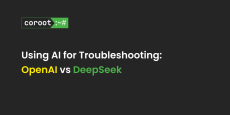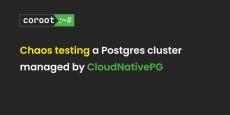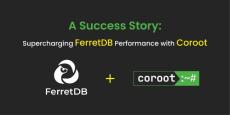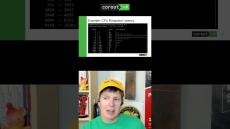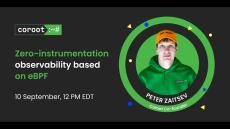|
By Nikolay Sivko
This week, security researchers at Wiz published a report about an internal database at DeepSeek being exposed to the internet. This kind of security risk is surprisingly common and can affect any company. The only way to prevent it is through continuous monitoring. But in modern infrastructures, services can be exposed in many different ways, making detection tricky. At Coroot, we realized that the telemetry data we already collect can help identify these risks — without requiring any extra setup.
|
By Nikolay Sivko
AI is now a go-to tool for everything from writing to coding. Modern LLMs are so powerful that, with the right prompt and a few adjustments, they can handle tasks almost effortlessly. At Coroot, we’ve been experimenting with AI for observability. Our goal is to make it useful in the final stage of troubleshooting—when we’ve already identified which service is causing issues, like Postgres, but finding the exact root cause is still tricky due to the many possible scenarios.
|
By Nikolay Sivko
At Coroot, we started using eBPF to give users insights into their system performance without needing them to change code or redeploy services. This approach not only makes setup easier but also ensures full visibility, even for third-party and legacy services. To truly achieve this, though, the tool needs to support a wide range of application protocols. Coroot has long supported popular ones like HTTP, gRPC, Postgres, MySQL, Redis, Memcached, MongoDB, Kafka, and Cassandra.
|
By Nikolay Sivko
As more organizations move their databases to cloud-native environments, effectively managing and monitoring these systems becomes crucial. According to Coroot’s anonymous usage statistics, 64% of projects use PostgreSQL, making it the most popular RDBMS among our users, compared to 14% using MySQL. This is not surprising since it is also the most widely used open-source database worldwide.
|
By Peter Zaitsev
There is a phenomenal amount of Observability tools on the market, coming in all shapes and sizes, offering many tools and approaches to solve what seems to be an endless number of problems. It also can be overwhelming to use, hard to set up and expensive to run, especially if you are going with SaaS based market leaders like DataDog.
|
By Peter Zaitsev
When you build software, its terminology, concepts and relationship between them is quite obvious to you, when you’re starting to use software built by someone else – might not be so much so. In this blog post I tried to cover most important Coroot concepts and terminology – reading it will hopefully help you to understand Coroot much better if you’re just starting up with it.
|
By Anastasiia Giles
At Coroot, we’re passionate about providing developers with the tools they need to build and maintain high-performing applications. Recently, we had the opportunity to help a team using FerretDB, the open-source document database offering MongoDB compatibility with a PostgreSQL backend, significantly improve their monitoring and performance. This is their story.
|
By Nikolay Sivko
We’re excited to announce Coroot v1.6, packed with major improvements and new features to make observability even better! Here’s what’s new.
|
By Peter Zaitsev
If you’re an experienced engineer, you likely have comprehensive observability and monitoring set up for your production systems. So if issues arise, you’re empowered to resolve them quickly. Yet, there are way too many systems out there, especially smaller and simpler ones, which are running with only rudimentary observability systems, or no observability at all. This means when an application goes down or starts to perform poorly, it may be very hard to pinpoint and resolve the issue.
|
By Peter Zaitsev
You are running a complex, mission-critical application, and you understand you need an advanced Observability solution to efficiently troubleshoot and proactively prevent issues. Yet you have a choice to make—should you choose a “Fully Managed” SaaS solution such as Datadog, Newrelic, or Dynatrace, or should you pick an Open-Source solution that you can host yourself?
|
By Coroot
Discover how eBPF can provide unparalleled visibility into your Kubernetes clusters. Watch the full webinar: "Zero-Instrumentation Observability with eBPF" with Peter Zaitsev. Coroot is an open source observability platform that helps engineers fix service outages and even prevent them. It continuously audits telemetry data to highlight issues and weak spots in your services. Quick setup, no code required.
|
By Coroot
Get tips on choosing the right eBPF-based tool for your Kubernetes environment. Watch the full webinar: "Zero-Instrumentation Observability with eBPF", learn from Peter Zaitsev. Coroot is an open source observability platform that helps engineers fix service outages and even prevent them. It continuously audits telemetry data to highlight issues and weak spots in your services. Quick setup, no code required.
|
By Coroot
Zero-Instrumentation Observability with eBPF Are you struggling to achieve comprehensive system observability without the burden of instrumentation? Join Peter Zaitsev for a webinar that will revolutionize your approach. Discover how eBPF, a powerful technology, can provide zero-instrumentation observability, allowing you to: Coroot is an open source observability platform that helps engineers fix service outages and even prevent them. It continuously audits telemetry data to highlight issues and weak spots in your services. Quick setup, no code required.
|
By Coroot
Explore the groundbreaking role of AI in elevating observability in the tech industry. Discover innovative perspectives on leveraging AI to identify potential issues before they escalate. This transformative technology is reshaping the way we perceive and manage system performance. Coroot is an open source observability platform that helps engineers fix service outages and even prevent them. It continuously audits telemetry data to highlight issues and weak spots in your services.
|
By Coroot
Discover the crucial elements of observability and how instrumentation plays a pivotal role in data collection. This insightful exploration delves into the two types of instrumentation: static, always-on metrics like ProcFS in Linux, and dynamic instrumentation that adapts to specific needs, powered by cutting-edge technologies such as D-Trace and eBPF. Coroot is an open source observability platform that helps engineers fix service outages and even prevent them. It continuously audits telemetry data to highlight issues and weak spots in your services.
|
By Coroot
In an era where visibility into system performance is crucial, how do we ensure we see critical issues? With so many tools available, selecting ones that provide actionable insights tailored for developers rather than overwhelming them with unnecessary data is vital. Coroot is an open source observability platform that helps engineers fix service outages and even prevent them. It continuously audits telemetry data to highlight issues and weak spots in your services.
|
By Coroot
Coroot may not overwhelm you with endless dashboards, but it shines in delivering the most crucial data insights for your projects. With a focus on less is more, it helps eliminate information overload and keeps you focused on what truly matters. Discover how Coroot provides comprehensive infrastructure coverage and powerful root cause analysis capabilities, allowing you to pinpoint issues efficiently.
|
By Coroot
Discover how observability can be a game-changer in your system's performance! Prevent disk space issues before they become disasters, stay ahead of potential failures, and learn about effective alerting strategies to keep your organization running smoothly. Coroot is an open source observability platform that helps engineers fix service outages and even prevent them. It continuously audits telemetry data to highlight issues and weak spots in your services.
|
By Coroot
Dive into the world of open-source solutions and explore how Coroot revolutionizes observability with its cutting-edge technology. This open-core software seamlessly integrates with your applications, making instrumentation a breeze—even for encrypted traffic! Experience robust monitoring capabilities without the cumbersome setup. Uncover the future of observability today!
|
By Coroot
Observability isn't just a buzzword—it's a vital component of modern computing. In recent webinar Peter Zaitsev discusses the multifaceted world of observability, highlighting its critical role in ensuring both application performance and user experience. Discover how different systems, from application performance management (APM) to infrastructure monitoring, collaboratively work to provide insights into user interactions and business outcomes. Explore why understanding these dynamics is essential for both developers and businesses striving for excellence.
- January 2025 (6)
- December 2024 (2)
- November 2024 (3)
- September 2024 (3)
- August 2024 (17)
- July 2024 (3)
- June 2024 (3)
- May 2024 (6)
Metrics, logs, traces, continuous profiling, and SLO-based alerting, supercharged with predefined dashboards and inspections.
An open-source observability platform built for simplicity. Say goodbye to manual analysis of metrics, logs, and traces. Gain actionable insights and focus on remediation.
Observability made simple:
- Zero-instrumentation: Coroot uses eBPF to automatically collect comprehensive telemetry data, including metrics, logs, and traces. It provides a detailed Service Map of the entire system, eliminating blind spots. Coroot also includes predefined inspections that can identify root causes for over 80% of issues without requiring any configuration.
- Application Health Summary: Coroot’s Application Health Summary feature makes it easy to understand the status of your services, even when you have hundreds of them. It provides instant insights into application logs and tracks Service Level Objectives (SLOs) for efficient performance monitoring.
- Distributed Tracing: Coroot’s distributed tracing helps you answer critical questions about your system’s performance. Coroot fully supports OpenTelemetry, ensuring no vendor lock-in. Struggling to instrument legacy or third-party services? Coroot’s eBPF-based instrumentation captures requests without any code changes.
- Log Monitoring: Grasp insights from logs with just a quick glance. Coroot performs low-overhead log analysis right on the node to identify message severities and recurring patterns. This process is seamless and compatible with a wide range of log formats, providing valuable meta-information for quick and easy log analysis.
- Continuous Profiling: Coroot’s Continuous Profiling allows you easily identify and analyze any unexpected spikes in CPU and memory usage down to the precise line of code. This allows you to quickly pinpoint and resolve performance bottlenecks, optimize your application’s resource utilization, and deliver a faster and more reliable user experience.
- Deployment Tracking: Coroot discovers and monitors every application rollout in your Kubernetes cluster. Each release is automatically compared with the previous one, so you’ll never miss even the slightest performance degradation. No integration with your CI/CD pipeline is required.
- Cost Monitoring: Every developer understands that in order to optimize something, you must first measure it. The same principle applies to you cloud costs – measuring them is crucial for optimization. Now you can easily monitor you cloud costs with Coroot. It doesn’t require access to you cloud account or any other configurations.
Enable system observability in minutes, no code changes required.



